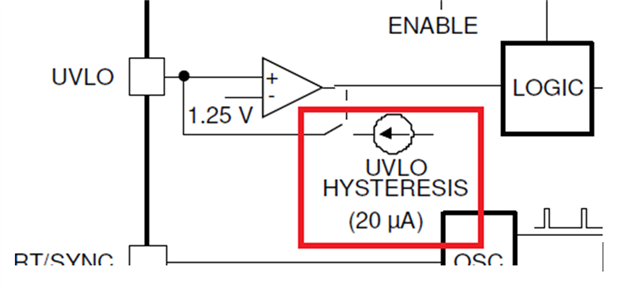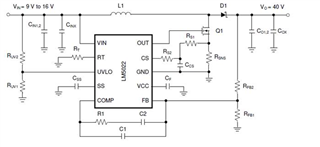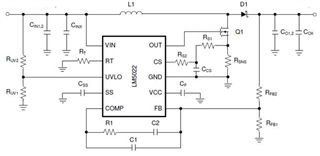Hi team
There is a good new that we DIN LM5022!
If the LM5022 wants to change or increase the hysteresis of UVLO, is there a suggested solution?
At present, the SPEC is using a 20-μA current source (red box below)
But how to design hysteresis with this current source?! Thanks








